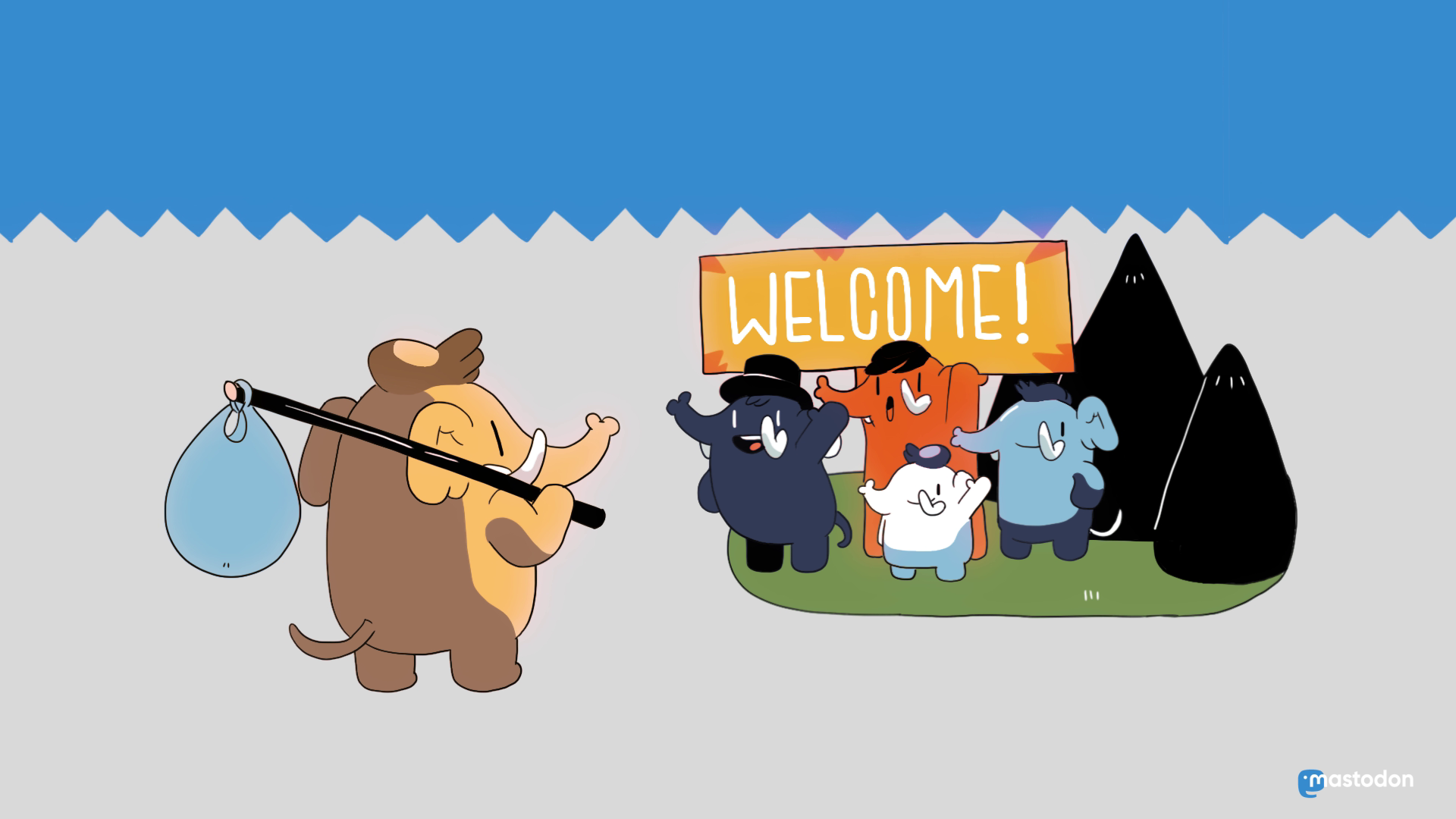Mastodon's 2 Year Anniversary
A retrospective

Eugen Rochko
Strategy & Product Advisor, Founder

Mastodon was first announced to the public through Hacker News, a link aggregator site for programmers, on October 6, 2016. Now we’re celebrating the 2 year anniversary! 🎉
Network growth
From 45 registered users on mastodon.social, the only Mastodon server at the time, the network grew to 1,627,557 registered users on 3,460 servers. That’s not counting people on non-Mastodon servers that are compatible with Mastodon via ActivityPub!
There are a lot of small servers: The median user number per server is 8 people. The biggest server hosts 415,941 accounts. The 3 largest servers combined host 52% of the network’s users, the 25 largest servers host 77% of all users *. This is natural as the largest servers are more known and therefore attract a lot of new people. However, for many people who stick around, they act as gateways, wherein once they learn more about Mastodon, they switch to a different, usually smaller server.
The oldest servers that are still around today are mastodon.social, awoo.space, social.tchncs.de and icosahedron.website.
Most exciting new server growth events:
- In April 2017, mstdn.jp was created by nullkal in his apartment. The first Japanese server of Mastodon went viral and saw a growth of tens of thousands accounts within a few days, and served as a catalyst for Mastodon’s popularity in Japan.
- In May 2018, after the SESTA/FOSTA laws were passed in the US and forced many sex workers into exile from mainstream social media websites, Assembly Four founded switter.at, a Mastodon server for sex workers. It grew rapidly towards a hundred thousand accounts.
To this day, mastodon.social, mstdn.jp, switter.at, pawoo.net and friends.nico are the largest servers.
Development milestones
From 332 commits by a single developer, the GitHub repository grew to over 6,140 commits by 513 people. Since the start of development in March 2016, 102 versions of Mastodon have been released, beginning with v0.1.0 up to the latest v2.5.2.
4,343 pull requests were merged, and 2,851 issues were closed.
This is what Mastodon looked like in October 2016:
Here is a time table of Mastodon’s most notable features, that is, features that Mastodon is most known for today:
October 2016
- The interface becomes responsive for mobile screens
November 2016
- Hashtags are implemented
- Search for accounts is implemented
- Notifications
- Marking media as sensitive is added
- The “unlisted” visibility setting is added
- The publish button is renamed to “toot”
December 2016
- The reblog button is renamed to “boost”
- Public timeline now excludes boosts and replies
- First admin interface is added
- Locked accounts are implemented
- The “private” visibility setting is added
January 2017
- Viewing one’s own favourites is implemented
- Remote follow dialog is added
- The “boop” sound for notification appears
- Content warnings are implemented
- Two-factor authentication is added
February 2017
- The Streaming API appears
- Reporting accounts and toots is implemented
- The public timeline is split into “local” and “whole known network”
March 2017
- An emoji picker is added
April 2017
- The “direct” visibility setting is added
- The coyote stops rotating as new GIF autoplay preferences are added
June 2017
- The columns in the web interface can be moved, added and removed
- Deleting own account is implemented
August 2017
- The Mastodon logo is updated
- Web Push is implemented, allowing the web interface to receive push notifications
September 2017
- The entire Mastodon network is successfully upgraded from OStatus to ActivityPub
- Pinning toots is implemented
- MySpace Tom lives on as Mastodon begins making new users follow their admin by default
October 2017
- Custom emoji are implemented
- Alternative text for media attachments is added
- Hotkeys in the web interface are implemented
December 2017
- Lists are implemented
- Invite system is added
January 2018
- The e-mails sent by Mastodon become pretty
March 2018
- Search for toots is implemented
- Account backup download is implemented
- Focal point selection for thumbnails is implemented
- The frontpage is redesigned
May 2018
- Profile metadata can now be customized
- Up-to-date privacy policy is included
September 2018
- Support for federation relays to improve content discovery is added
- Public pages of profiles and toots are redesigned
- Featuring friends on public profile is implemented
Press coverage
In the two year span, Mastodon was covered by:
- The New York Times
- The Washington Post
- Esquire
- The Verge
- Motherboard
- Wired
- NPR
- The Outline
- Autostraddle
- Forbes
I was interviewed on three different podcasts:
One piece of coverage stands out particularly as the source of a running joke on Mastodon. Lance Ulanoff from Mashable opened his April 2017 article “Six Reasons Mastodon Won’t Survive” with the words “William Shatner couldn’t find me on Mastodon. This was a problem.” Since then, Mastodon was known as the Shatner-free space, where you are safe to hide from his gaze.
Of course, that article was wrong on many accounts, and severely underestimated Mastodon’s survivability. There were many opinion pieces titled things like “Mastodon is dead in the water” predicting its timely demise. In the end, Mastodon out-survived App.net and Google+, a multi-million dollar project.
Other
Since beginning as a single repository on GitHub, Mastodon has got:
- A beautiful, dedicated homepage describing the project
- A dedicated blog, the one you are reading right now
- A new documentation website
- A GitLab server hosting many orbiting code repositories
Fazit
I’m very happy with Mastodon’s accomplishments. Overseeing such a large project has its ups and downs, as it’s impossible to keep everyone happy all the time when people have conflicting desires. Regardless, I consider these to be the two best years of my life, as work on Mastodon is incredibly fulfilling and interacting with all the interesting people on the platform is very fun.
Would I have done something differently if I was starting from scratch now? Mostly, no. I still receive comments about the name “Mastodon” not being suitable, or “toot” being too silly. I wouldn’t change it. I think there is nothing wrong with being less serious, and if it alienates more corporate-minded users, that’s fine. I don’t wake up every day wishing to interact with my favourite brand.
As for the future, development continues: The v2.6.0 version of Mastodon is currently in the works, containing many quality of life improvements, bug fixes, improved administrative tools and a decentralized version of identity verification.
Mastodon has proved itself sustainable and has accomplished a lot in taking a foothold in mainstream consciousness. With more and more people become disillusioned with the tech giants, Mastodon will become ever more appealing. Let’s get to ten million users next.
